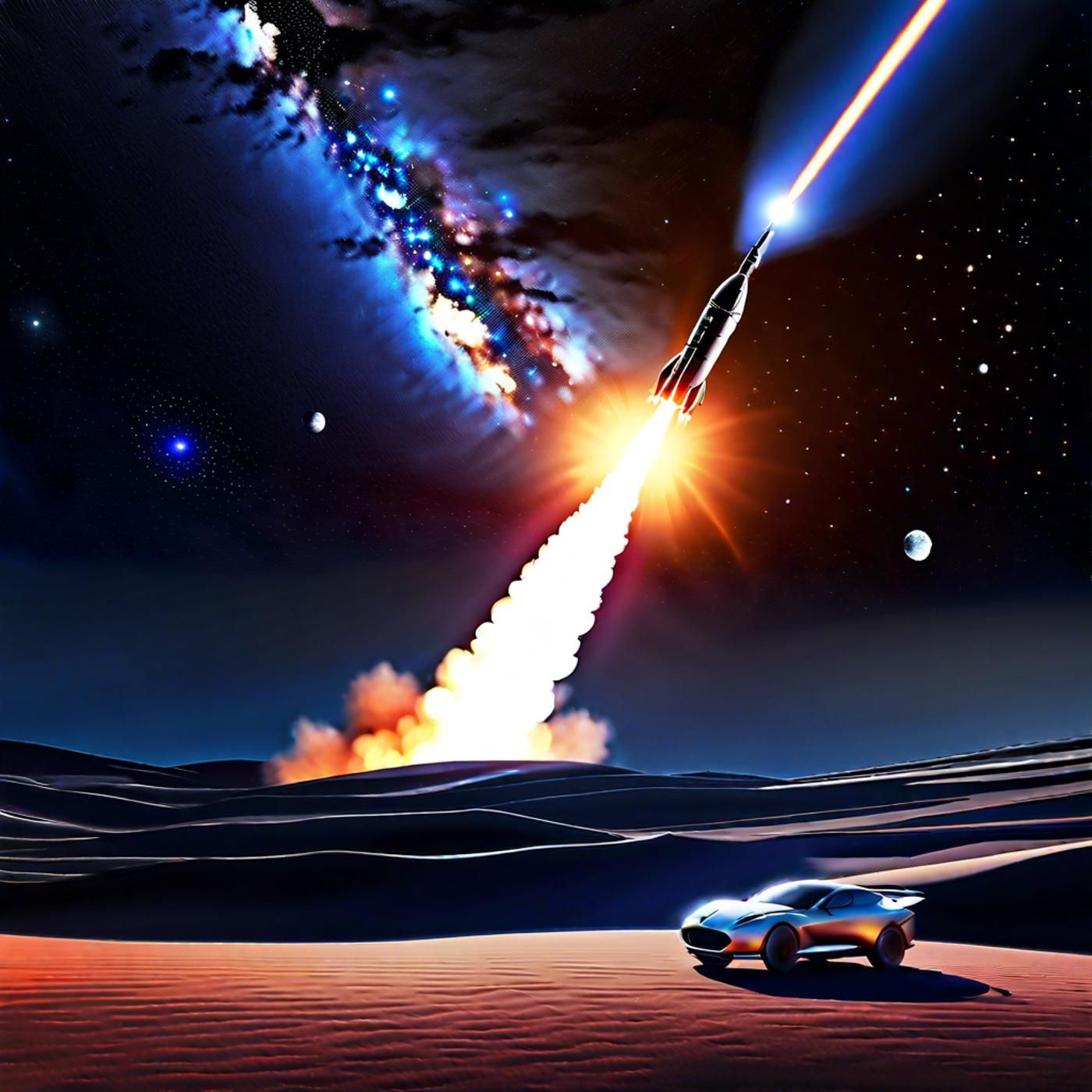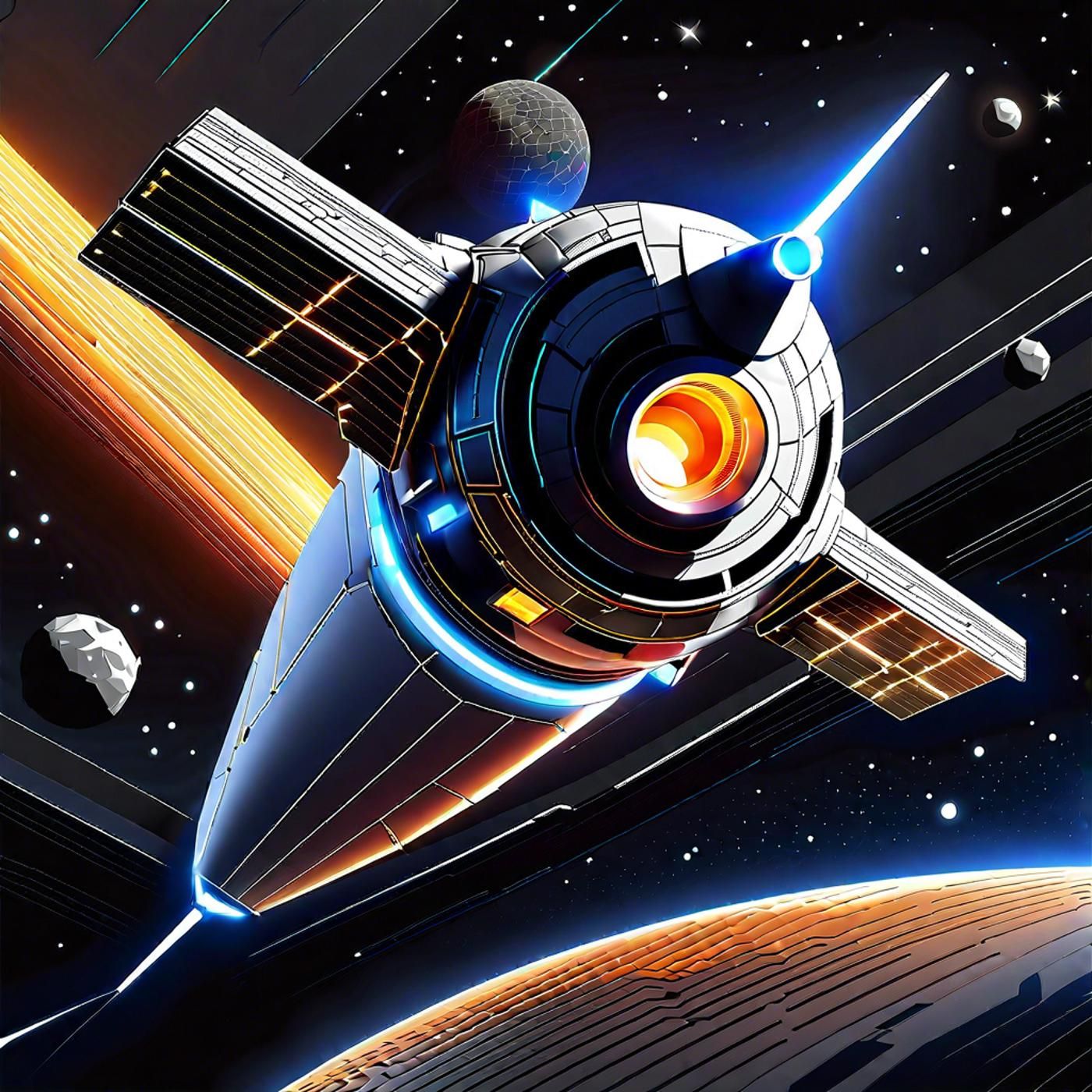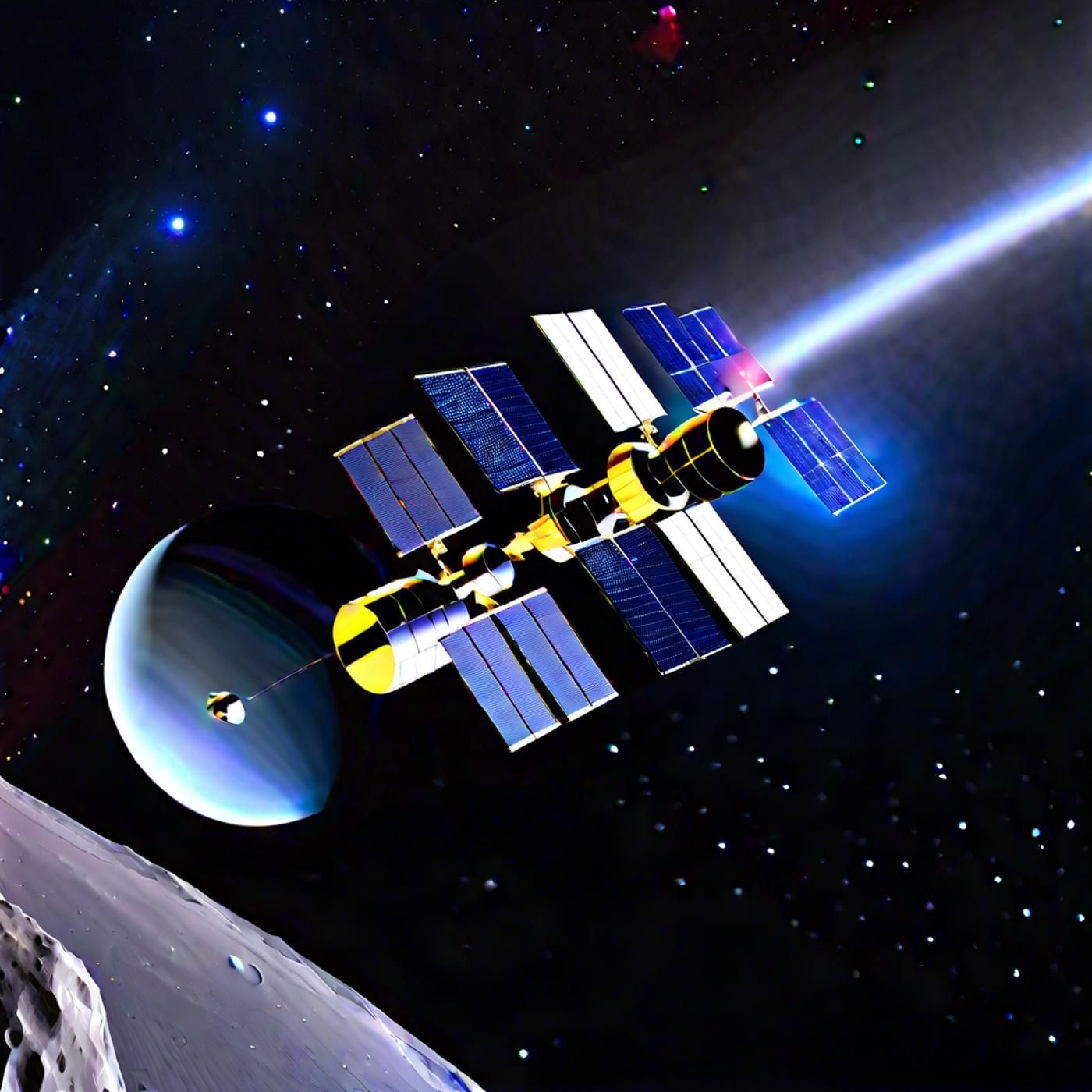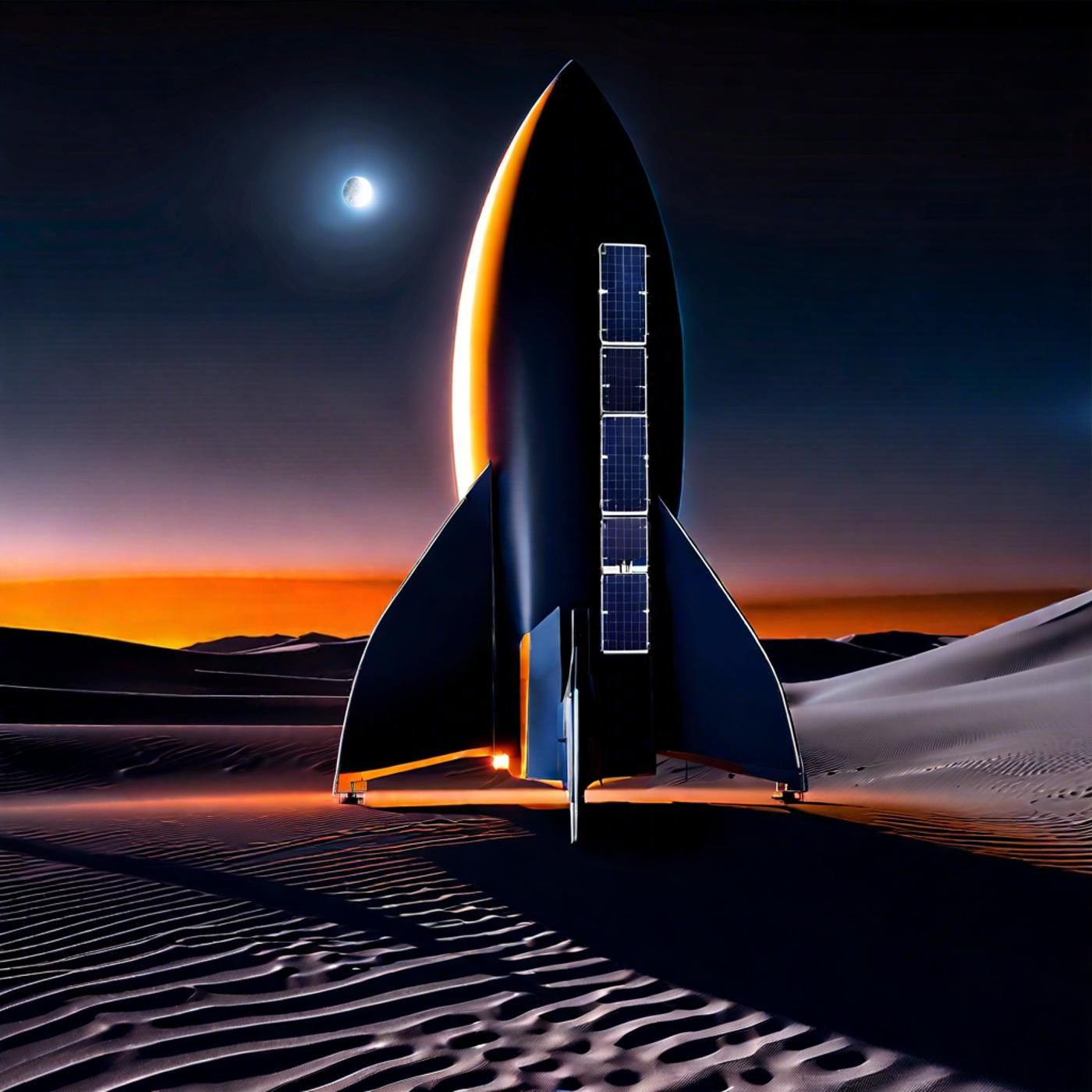S03E88: Starliner Hurdles & Europe's Rocket Shift

Welcome to Astronomy Daily, the Podcast that brings you the latest updates from around the universe. I'm your host, Anna. Today we have a lineup of fascinating stories that highlight the dynamic and ever-evolving nature of space exploration. We'll...
Welcome to Astronomy Daily, the Podcast that brings you the latest updates from around the universe. I'm your host, Anna. Today we have a lineup of fascinating stories that highlight the dynamic and ever-evolving nature of space exploration. We'll delve into NASA's ongoing efforts to bring the Boeing Starliner crew back home safely amid technical challenges and discuss Europe's weather satellite operators' notable decision to switch from the delayed Ariane 6 rocket to the more reliable SpaceX Falcon 9 for satellite launches. We'll also cover other intriguing updates, including a postponed spacewalk on the ISS due to a spacesuit leak, new insights on meteoroid impacts on Mars from NASA's InSight mission, and groundbreaking experiments aimed at uncovering the mysteries of dark energy. So let's dive into today's headlines.
For more from the Astronomy Daily team, visit our website at www.astronomydaily.io and our HQ at www.bitesz.com where you'll find more space news podcasts to satisfy your cravings.
Become a supporter of this podcast: https://www.spreaker.com/podcast/astronomy-daily-the-podcast--5648921/support.
Astronomy Daily brings you the latest updates from around the universe
Anna: welcome to Astronomy Daily, the Podcast that brings you the latest updates from around the universe. I'm your host, Anna. Today we have a lineup of fascinating stories that highlight the dynamic and ever evolving nature of space exploration. We'll delve into NASA's ongoing efforts to bring the Boeing Starliner crew back home safely amid technical challenges and discuss Europe's weather. Satellite operators notable decision to switch from the delayed Ariane six rocket to the more reliable SpaceX Falcon nine for satellite launches well also cover other intriguing updates, including a postponed spacewalk on the ISS due to a spacesuit leak, new insights on meteoroid impacts on Mars from NASA's InSight M mission, and groundbreaking experiments aimed at uncovering the mysteries of dark energy.
NASA astronauts stranded on ISS due to thruster problems and helium leaks
So let's dive into today's headlines. NASA officials reassured the public that astronauts butch Wilmore and SUNY Williams are not stranded on the International Space Station despite delays in their return due to thruster malfunctions and helium leaks. After taking off on June 5, they docked at the ISS with Boeing's Starliner, a spacecraft that's had its share of challenges. What was meant to be a week long mission has seen their stay extended multiple times due to the complications encountered on their journey. Starliner faced issues with some of its thrusters and helium leaks, which were detected during the flight. While the situation sounds concerning, NASA has insisted that the astronauts are in no immediate danger. In fact, according to NASA's commercial crew, program manager Steve Stitch, Butch and SUNY are having a productive time aboard the ISS, and their return is being carefully planned to ensure their safety. Boeing's program has not been without its setbacks, drawing comparisons to SpaceX's more successful crew dragon program. Amidst the negativity, NASA and Boeing insist that these are normal teething problems typical for new spacecraft. Engineers are running comprehensive tests to identify and address the root causes before the crew makes their journey back to Earth safely. As the testing moves forward, NASA aims to start by July 2, with an estimated duration of two weeks. This situation serves as a potent reminder of the complexities involved in space travel, with lessons being learned that will inform not just the Starliner program, but future missions as well. In a significant move, the European Organization for the Exploitation of meteorological satellites, also known as UmetSat, has decided to use SpaceX's Falcon nine rocket instead of the delayed Ariane six for its upcoming satellite launch. This decision marks a pivotal shift in Europe's approach to space missions and undoubtedly highlights the increasing dominance of SpaceX in the global space industry. For context, UMetSat had originally planned to launch the MTG s one weather satellite using the european Ariani six rocket. However, persistent delays of the Ariane six, which has yet to complete its inaugural flight, have prompted UMetSat to seek alternatives. The Falcon nine, known for its reusability and reliability, presented itself as a viable and timely option. The implications of this decision are wide ranging. It serves as a stark reminder of the challenges faced by Europe's space efforts, particularly in developing and deploying new launch vehicles. The Ariane six program has been beset by numerous delays and setbacks, putting european space agencies on the back foot in an industry where timing is crucial. Moreover, the switch to Falcon nine underscores SpaceX's rising influence in space transportation. Since its first operational flight in 2012, the Falcon nine has become a go to for many international agencies and private companies, offering competitive pricing, flexible launch schedules, and a well proven track record of success. The move has sparked conversations within european space circles about the need for greater independence and reliability in the continent's space missions. Leaders are calling for more robust policies to ensure that european satellites can be launched on european rockets, fostering a resilient space sector that can compete on the global stage. As we look to the future, it'll be intriguing to see how Europe navigates these challenges and whether SpaceX continues to capture more market share with its innovative approaches and technologies.
NASA postpones spacewalk after astronaut Tracy Caldwell Dyson's suit leaks water
NASA has hit pause on an eagerly anticipated spacewalk after astronaut Tracy Caldwell Dyson's spacesuit started leaking water. Originally scheduled for July 2, the mission has been pushed back to the end of the month. This allows critical time for NASA's mission teams to dig deeper into what went wrong during the most recent extravehicular activity on June 24. During that brief 30 1 minute spacewalk, Dyson's suit, designed to use water as a coolant, began to leak from an umbilical line. This issue didn't stem from the suit itself, but from this essential connector that serves the suit. Bill Spetch, NASA's operations integration manager for the International Space Station program, reassured everyone that delaying the spacewalk until the end of July is a necessary move to ensure the safety of future missions. NASA is taking no chances when it comes to astronauts safety. Previous coolant leaks, like those experienced by European Space Agency astronaut Mathias Maurer in 2022 and ESA astronaut Luca Parmitano in 2013, underscore the serious risks involved Parmitano's helmet filled with water during a spacewalk, forcing a hasty return to the station's interior, a critical reminder of what can go wrong when Dyson and astronaut Mike Barrett finally venture outside the ISS later this month, they'll have a full slate of tasks ahead. Their mission includes making hardware replacements, prepping science gear for future upgrades, and conducting crucial photographic inspections of the station's pipelines. Stay tuned for further updates as NASA continues its detailed investigation. The agency is committed to learning from each hiccup to ensure that the next spacewalk goes off without a hitch. After all, every detail counts when you're working in the stark expanse of outer space.
NASA's Insight mission has uncovered some fascinating and unexpected findings about Mars
Recent, data from NASA's Insight mission has unveiled some fascinating and unexpected findings about Mars. The mission's highly sensitive onboard seismometer has detected that the red planet is being struck by meteoroids at a frequency much higher than we previously thought. This new information is causing quite the stir in the scientific community, challenging existing models and pushing us to rethink our understanding of the martian surface. Lead researcher Ingrid Dobar from Brown University has highlighted that these frequent impacts suggest that Mars might be more geologically active than we had assumed. What's particularly striking is that the estimated impact rates could be anywhere from two to ten times higher than previous estimates, depending on the size of the meteoroids. In their study, the research team identified eight new impact craters that had not been previously observed from orbit, solely using Insight's seismometer data. These new findings are reshaping our perceptions of martian geological activity and indicate that Mars's surface is being continually sculpted by these cosmic collisions. Interestingly, some of the largest impacts ever recorded on Mars were detected just 97 Daily apart, leaving craters approximately the size of a football field. This has led scientists to speculate that the rate of such impactful events is much higher than previously believed. The insight gained from this mission is proving invaluable. It not only forces a, revision of current martian cratering models, but also has broader implications across the entire solar system. By providing a new tool for detecting impacts, insights findings help us understand the ongoing dynamics of Mars and highlight the potential hazards these impacts may pose for future missions. Moreover, these discoveries encourage us to compare these martian impacts with similar events on Earth, shedding light on the population of bodies striking planets in our solar system. The continuing analysis of insight data promises to enhance our knowledge of planetary evolution and surface processes, potentially informing safer expedition plans for Mars missions ahead.
Europe's newest heavyweight launcher, the Ariane Six, is set for launch
Europe's newest heavyweight launcher, the Ariane 6 rocket, is set to embark on its inaugural flight, carrying with it a groundbreaking technological experiment. This mission will feature the first ever demonstration of Li Fi, or light fidelity communication technology, in space. Unlike traditional Wi Fi that uses radio waves, Li Fi employs light to transmit data which could offer significant advantages for space applications, including greater security, higher bandwidth, and reduced weight. Developed by the French company Oledcom, this innovative Li Fi technology uses led lights that flicker on and off millions of times per second to encode data. It's akin to optical Morse code, but at a speed so high that it's imperceptible to the human eye. For the Ariane Six mission, the Li Fi system will consist of two saddle life modules positioned 80 cm apart under the rocket's fairing. Upon detecting liftoff, these modules will begin exchanging data through light signals, enabling the team to examine the technology's performance and sturdiness under the harsh conditions of space travel. The potential implications of successfully integrating Li Fi into space missions are profound. For one, it could eliminate the need for heavy radiation resistant cables traditionally used for intra satellite communications, thereby reducing the overall mass of spacecraft. This could result in significant fuel savings and lower the carbon footprint of missions. Additionally, the secure, interference free nature of Lefi makes it an attractive option for ensuring reliable data transmission between satellite components. As the Ariane six readies for launch, the inclusion of Li Fi technology underscores Europe's commitment to innovation in space exploration. Should this experiment prove successful, it could pave the way for more widespread adoption of Li Fi in future missions, further enhancing the efficiency and capabilities of space technologies. UC Berkeley physicists are pushing the boundaries of our understanding of the universe with a groundbreaking experiment designed to search for deviations from established gravity theories. This effort aims to unveil the elusive particles that may be driving dark energy, that mysterious force responsible for the accelerated expansion of the universe. The scientists have created a sophisticated setup that combines atom interferometers with optical lattices, achieving an unprecedented level of precision in measuring gravitational effects. The experiment immobilizes free falling atoms for seconds instead of milliseconds, allowing for more accurate observations. This innovative approach represents the most precise effort to date in detecting minor gravitational variations, which could hint at new particles such as chameleons or symmetrons. These hypothetical particles might be shielding dark energy's effects in the dense environment of our planet, only revealing their influence in the emptiness of space. The potential discoveries from this experiment are monumental. Not only could we confirm or dismiss theories about a new fundamental force in nature, but we might also inch closer to understanding the quantum nature of gravity, a phenomenon that has eluded scientists for decades. Imagine the implications. A quantum theory of gravity could revolutionize our grasp of the universe, linking the principles of quantum mechanics with the gravitational pull that governs cosmic bodies beyond its theoretical pursuits. The lattice atom interferometer holds promise for practical applications, including quantum sensing and precision measurements of gravity. Whether it's building more accurate gyroscopes and accelerometers, or offering new insights into the structure of our planet, this technology could pave the way for advancements in both scientific inquiry and everyday technology. In sum, this UC Berkeley experiment stands as a beacon of scientific ingenuity, striving to unlock the deepest secrets of the cosmos and the very nature of the forces that shape our universe. Thank you for tuning in to today's episode of Astronomy Daily. Remember to visit our website at astronomydaily.io where you can explore all our back episodes. Sign up for our free Daily newsletter and stay updated with the latest space and Astronomy news through our constantly updating news feed, Astronomy Daily. The Podcast is available wherever you get your podcasts, including Spotify, Apple Podcasts, YouTube Music, and iHeartRadio. Please subscribe, rate, and share. To help us reach more space enthusiasts like you, we would also like to extend a, special thanks to our sponsors who make this podcast possible Nordpass, NordVPN, Protonmail, and Amazon. Be sure to check out their special offers available on our website. Once again, I'm Anna, your host for today's episode. See you next time, and keep looking up at the stars.
New to Astronomy Daily - The Podcast?
Here are some great episodes to start with.




















